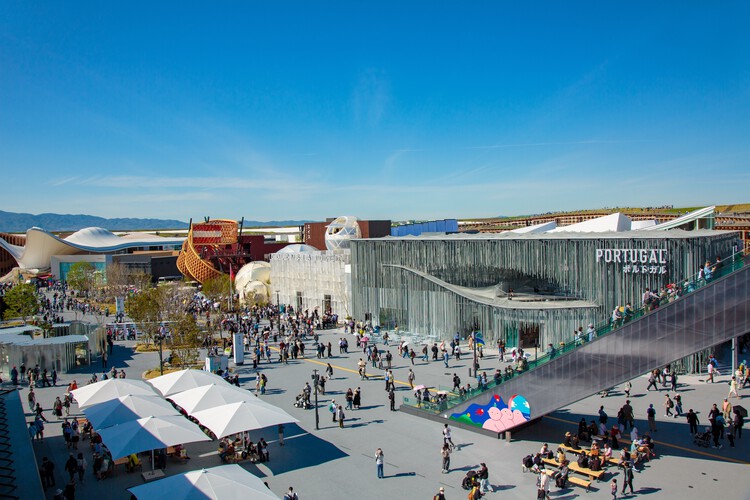 Expo Osaka 2025. Image © HikoPhotography via Shutterstock
Expo Osaka 2025. Image © HikoPhotography via Shutterstock
Share
Share
Or
https://www.archdaily.com/1032537/halfway-through-expo-2025-osaka-10-must-visit-pavilions
As Expo 2025 Osaka passes the midpoint of its six-month duration on July 13, the international exposition continues to serve as a global platform for architectural experimentation, cultural exchange, and technological innovation. Officially opened on April 13 on the reclaimed island of Yumeshima, the event is organized under the theme “Designing Future Society for Our Lives,” and has already welcomed more than 13 million visitors as of late July. Conceived as a space for collaboration across disciplines and borders, the Expo brings together more than 150 national, thematic, and corporate pavilions.
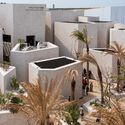
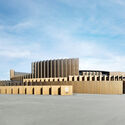
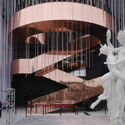
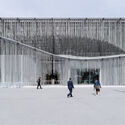
 + 6
+ 6
Structured around three subthemes, Saving Lives, Empowering Lives, and Connecting Lives, the Expo presents architecture as a medium to explore solutions to pressing global challenges. The overall master plan, developed by Sou Fujimoto, is centered around the Grand Ring, a monumental circular structure that now stands as the largest wooden architectural work in the world. Expo 2025 has drawn participation from more than 160 countries and regions, with around 80 architecturally distinct national pavilions showcasing their visions of the future. Many of these are the work of leading international architects: Kengo Kuma’s design for the Qatar Pavilion draws from desert topographies; Lina Ghotmeh interprets Bahrain’s maritime traditions through craft; and Mario Cucinella Architects offers a bio-based vision for Italy.
Read on to discover ten standout pavilions that offer compelling architectural narratives and are worth exploring.
Related Article Osaka Architecture City Guide: 23 Projects Showcasing Japan’s Design Legacy and Innovation Kingdom of Saudi Arabia Pavilion / Foster + Partners 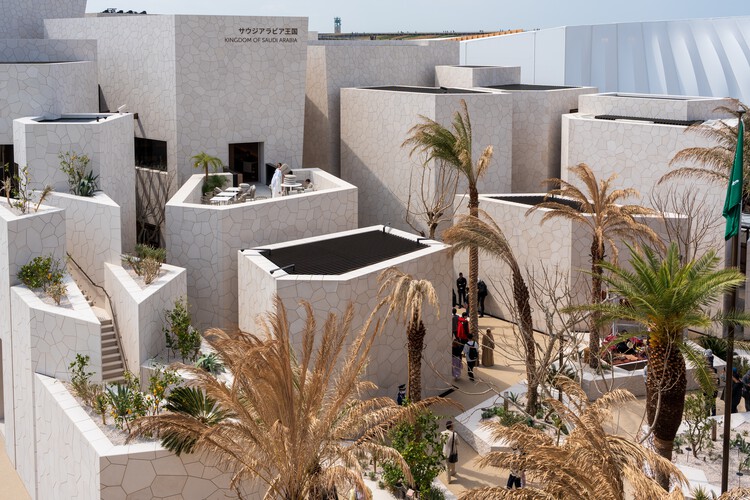 Kingdom of Saudi Arabia Pavilion / Foster + Partners. Image © Shawn.ccf via Shutterstock
Kingdom of Saudi Arabia Pavilion / Foster + Partners. Image © Shawn.ccf via Shutterstock
The Kingdom of Saudi Arabia Pavilion, designed by Foster + Partners, reimagines the traditional Saudi village through a sustainable lens. Inspired by organic forms, the pavilion’s design was refined using computational fluid dynamics simulations to optimize natural ventilation, allowing cool western winds to circulate through its streets during the intense summer months. Visitors enter via a lush forecourt planted with native Saudi flora, leading to the central Saudi Courtyard, the pavilion’s focal gathering space. Sustainability is embedded throughout the project, featuring solar energy systems, rainwater recycling, low-carbon construction materials, and energy-efficient lighting, all reinforcing Saudi Arabia’s vision for an environmentally conscious future
Japan Pavilion / Nikken Sekkei 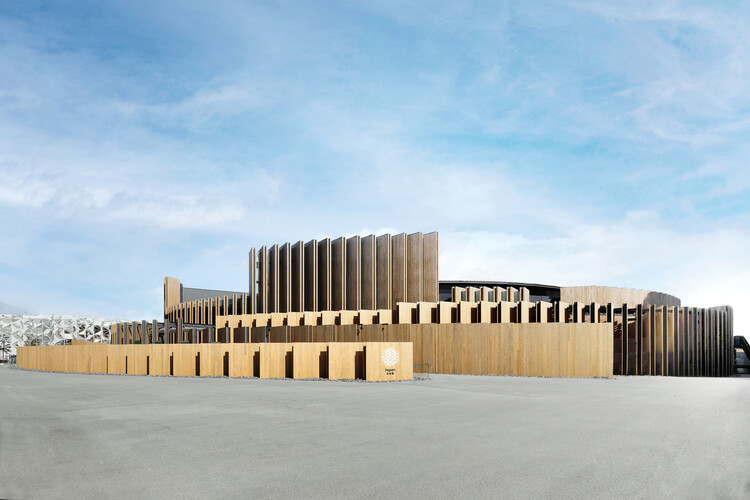 Japan Pavilion / Nikken Sekkei. Image Courtesy of Ministry of Economy, Trade and Industry
Japan Pavilion / Nikken Sekkei. Image Courtesy of Ministry of Economy, Trade and Industry
Designed by Nikken Sekkei, the Japan Pavilion at Expo 2025 Osaka centers on the theme “Between Lives,” exploring the intricate relationship between humanity and nature. Its distinctive circular form embodies continuity and connection, creating a spatial experience that encourages reflection on coexistence and sustainability. The pavilion’s dynamic design strategically harnesses natural light and ventilation, fostering an immersive environment that shifts throughout the day.
France Pavilion / Coldefy and Carlo Ratti Associati 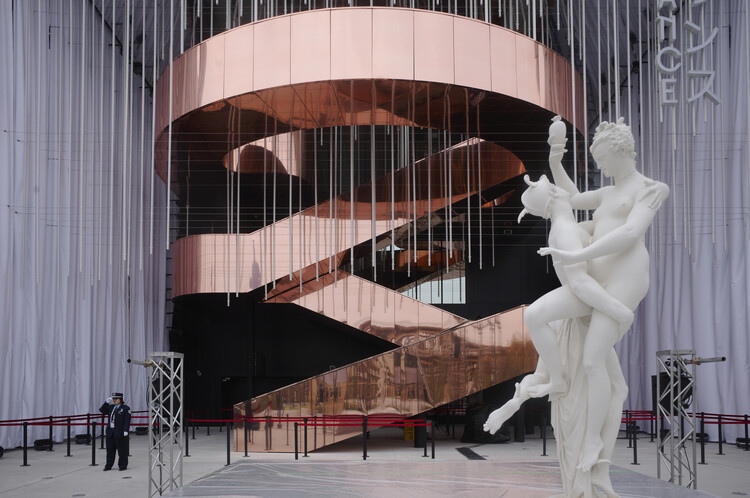 France Pavilion / Coldefy and Carlo Ratti Associati. Image © Julien Lanoo
France Pavilion / Coldefy and Carlo Ratti Associati. Image © Julien Lanoo
The France Pavilion, designed by Coldefy and Carlo Ratti Associati, is conceived as a “Theatre of Life,” responding to the Expo’s theme of “Empowering Life.” Covering 3,600 square meters near a main entrance, the pavilion features a circular plan highlighted by suspended transparent acrylic rods that allow natural light to filter through. Two sides are enclosed by 17-meter-high fabric curtains that move with visitors, reinforcing the concept of the pavilion as an interactive space. The design combines prefabricated components with natural materials, emphasizing a cycle of reuse and recycling intended to extend the pavilion’s sustainability beyond the event’s duration.
Portugal Pavilion / Kengo Kuma & Associates 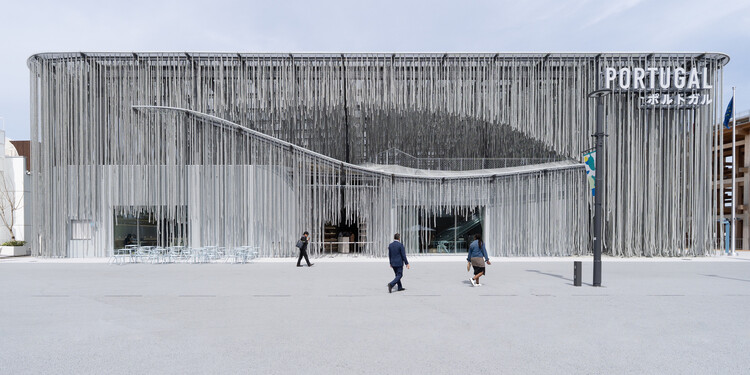 Portugal Pavilion / Kengo Kuma & Associates. Image © Tuğçe Arı
Portugal Pavilion / Kengo Kuma & Associates. Image © Tuğçe Arı
The Portugal Pavilion, designed by Kengo Kuma, embraces the theme “Ocean, The Blue Dialogue,” inviting visitors to explore the ocean as a life-giving resource and a foundation of sustainability. Reflecting Portugal’s deep historical, cultural, and economic ties to the sea, the pavilion creates an architectural and narrative journey bridging past, present, and future. Its structure, crafted from suspended ropes and recycled fishing nets, evokes the fluidity of ocean waves and interacts dynamically with sunlight and wind. Positioned prominently on the Expo site, the pavilion’s flowing forms and seemingly floating upper section create an immersive experience that aligns with the Expo’s theme of empowering lives.
Netherlands Pavilion / RAU Architects 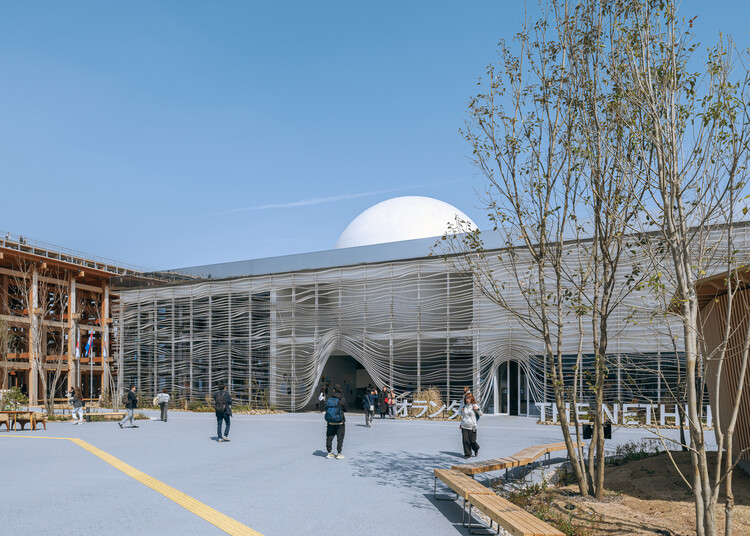 Netherlands Pavilion / RAU Architects. Image © Zhu Yumeng
Netherlands Pavilion / RAU Architects. Image © Zhu Yumeng
The Netherlands Pavilion, designed by RAU Architects, centers on the theme “Common Ground: Creating a New Dawn Together,” reflecting the country’s commitment to global collaboration in addressing shared challenges. The pavilion’s circular form features a striking illuminated sphere at its core, representing a human-made sun and symbolizing a future powered by clean, unlimited energy. This central element embodies the promise of sustainable resources and a new era of energy accessibility. Throughout the pavilion, visitors encounter innovative technologies focused on harnessing water’s vast energy potential, underscoring the Netherlands’ role in advancing the global energy transition.
Bahrain Pavilion / Lina Gometh Architecture 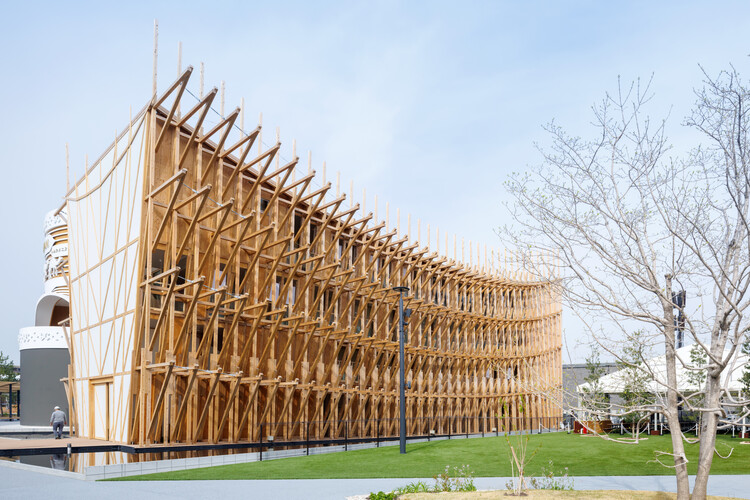 Bahrain Pavilion / Lina Gometh Architecture. Image © Iwan Baan
Bahrain Pavilion / Lina Gometh Architecture. Image © Iwan Baan
The Bahrain Pavilion, designed by Lina Ghotmeh – Architecture, draws inspiration from traditional Bahraini dhow boats and their historic craftsmanship. Located in the “Empowering Lives” zone and spanning 995 square meters, the pavilion reinterprets ancient boat-building techniques through a wooden structure clad with an aluminum outer layer. Designed for easy disassembly and recycling after the Expo, the pavilion incorporates passive cooling methods adapted from historic practices to reduce reliance on mechanical systems. This approach reflects Bahrain’s commitment to sustainability while honoring its maritime heritage, offering visitors an immersive sensory experience that bridges tradition and innovation.
Philippines Pavilions / Carlo Calma Consultancy 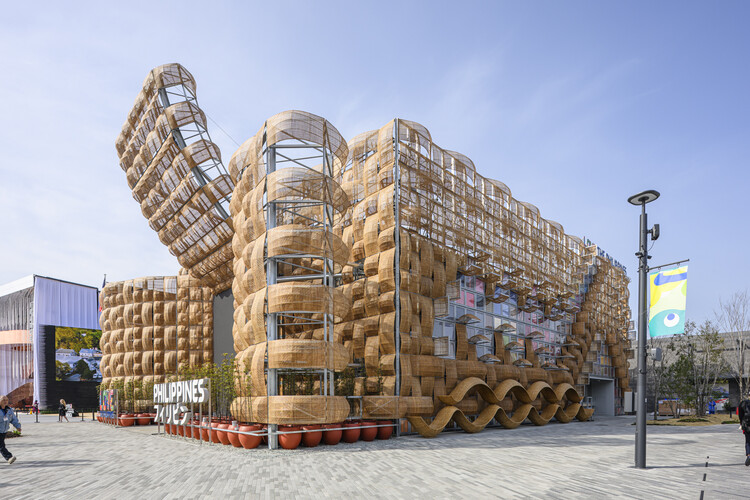 Philippines Pavilions / Carlo Calma Consultancy. Image © Masaki Komatsu
Philippines Pavilions / Carlo Calma Consultancy. Image © Masaki Komatsu
The Philippines Pavilion, designed by Filipino-led architectural firm Carlo Calma Consultancy in collaboration with Japanese executive architect Cat Inc., is titled “Woven” and reflects the nation’s deep ties to nature, culture, and community. Centered on the theme “Nature, Culture & Community: Woven Together for a Better Future,” the pavilion draws inspiration from traditional Filipino weaving techniques. Its architecture mimics the warp and weft structure, symbolizing unity, resilience, and progress. Constructed with over 1,000 rattan threads and 212 handwoven panels crafted by artisans from 18 ethnolinguistic regions, the pavilion elevates indigenous craftsmanship to an architectural scale.
Poland Pavilion / Interplay Architects 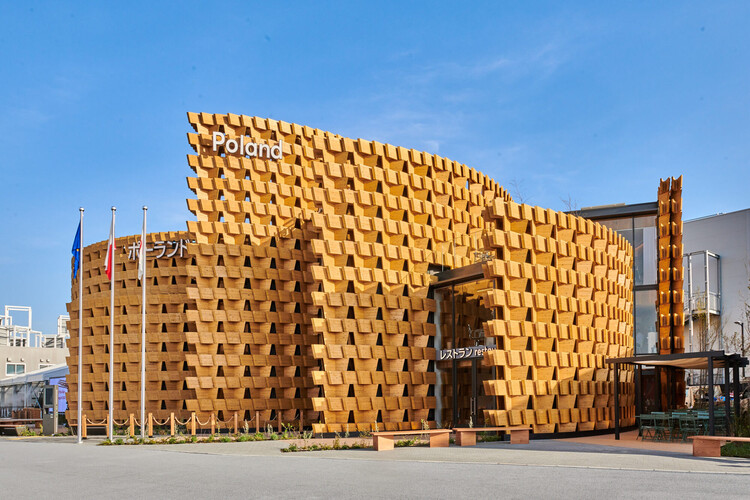 Poland Pavilion / Interplay Architects. Image Courtesy of Polish Pavilion Expo 2025
Poland Pavilion / Interplay Architects. Image Courtesy of Polish Pavilion Expo 2025
The Poland Pavilion, designed by Interplay Architects, responds to the theme “Designing Future Society for Our Lives” through a dynamic exploration of the spiral, a form that spans scales from protein molecules to galaxies. The pavilion’s geometric patterned façade features spiraling walls of varying heights, offering shifting perspectives that range from human scale at lower levels to expansive forms visible from afar. At its core, a central concert hall underscores the pavilion’s cultural focus. The outer skin incorporates modular Japanese woodwork craftsmanship, blending traditional techniques with optimized construction processes. Through this synthesis of geometry, culture, and craft, the pavilion embodies Polish ingenuity while inviting a global conversation on innovation and heritage.
Qatar Pavilion / Kengo Kuma & Associates 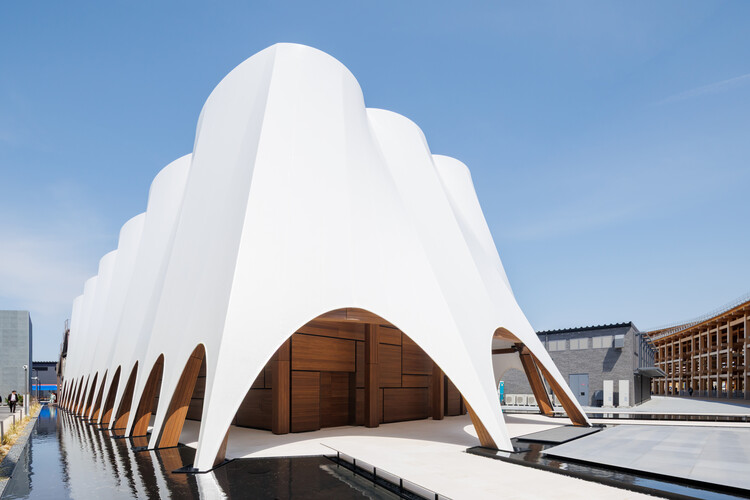 Qatar Pavilion / Kengo Kuma & Associates. Image Courtesy of Qatar Museums
Qatar Pavilion / Kengo Kuma & Associates. Image Courtesy of Qatar Museums
The Qatar Pavilion at Expo 2025 Osaka, designed by Kengo Kuma & Associates in collaboration with Qatar Museums, celebrates the deep maritime connections shared by Qatar and Japan. The pavilion’s design draws from traditional dhow boat construction techniques of Qatar and the refined wood joinery heritage of Japan, creating a sophisticated fusion of craftsmanship. Its intricate wooden framework is enveloped in a delicate veil of white fabric, reminiscent of the sails used on historic trading vessels that once navigated the coasts of Eastern Arabia, East Africa, Yemen, and South Asia. This layering of material and form not only references the region’s seafaring history but also symbolizes the exchange of resources and knowledge across cultures.
Czech Pavilion / Apropos Architects 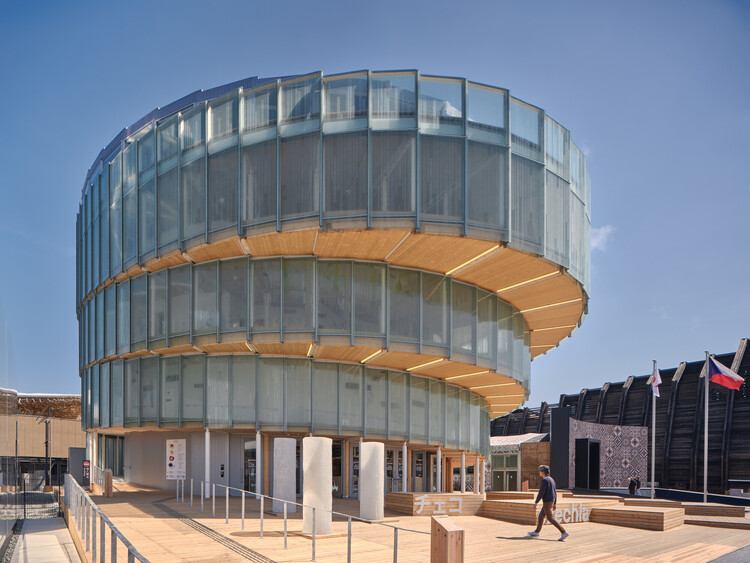 Czech Pavilion / Apropos Architects. Image © boysplaynice
Czech Pavilion / Apropos Architects. Image © boysplaynice
The Czech Pavilion, designed by Apropos Architects, embodies themes of life energy and continuous growth through its spiral-centered design. Visitors embark on a 260-meter-long pathway that gradually ascends across four floors, culminating in an observation roof that offers panoramic views. This architectural journey reflects the passage of time and broader narratives of personal and social development. The pavilion’s structure employs a regular framing system of cross-laminated timber panels, forming a continuous spiral ramp divided into thirty-six segments to facilitate construction, disassembly, and transport. An integrated staircase within the cylinder’s double walls connects visitors back to the ground-floor commercial space, which serves as the exhibition’s concluding chapter. The design harmonizes structural efficiency with an immersive spatial experience centered on growth and progress.
We invite you to check out ArchDaily’s comprehensive coverage of the Expo Osaka 2025.

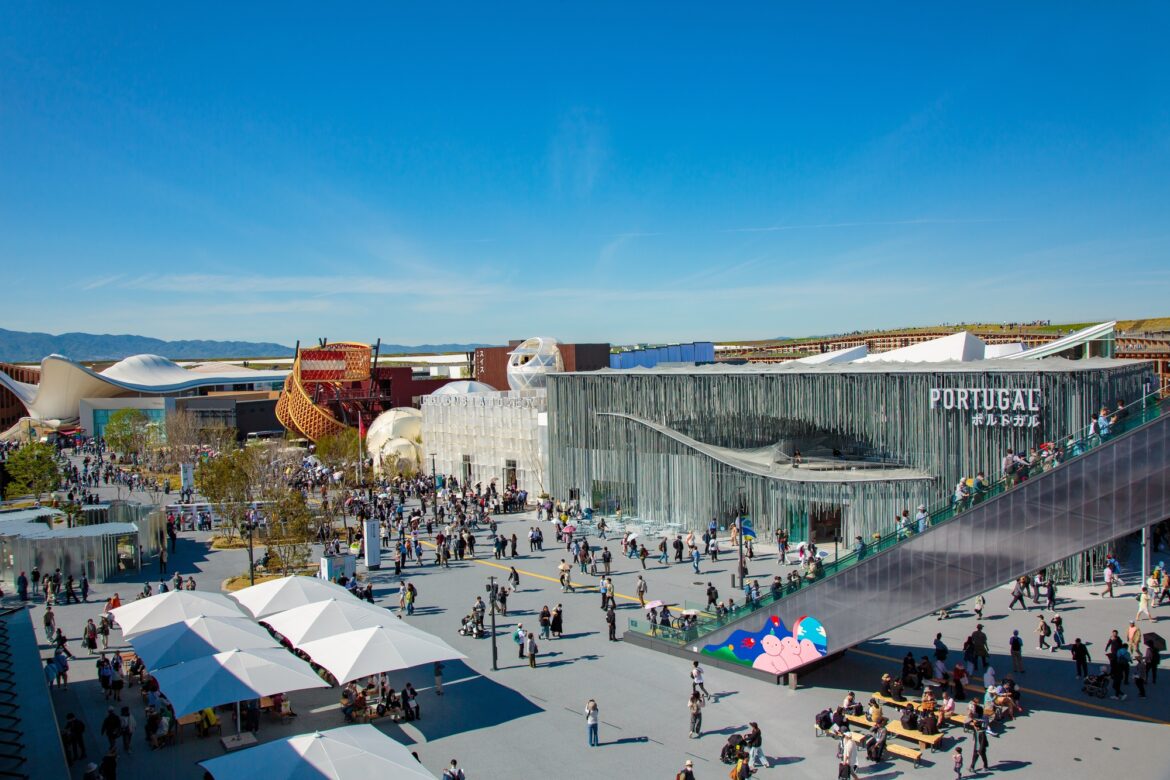
AloJapan.com